Affiliate links on Android Authority may earn us a commission. Learn more.
LG G Flex 2 vs Samsung Galaxy Note Edge quick look
Published onJanuary 5, 2015
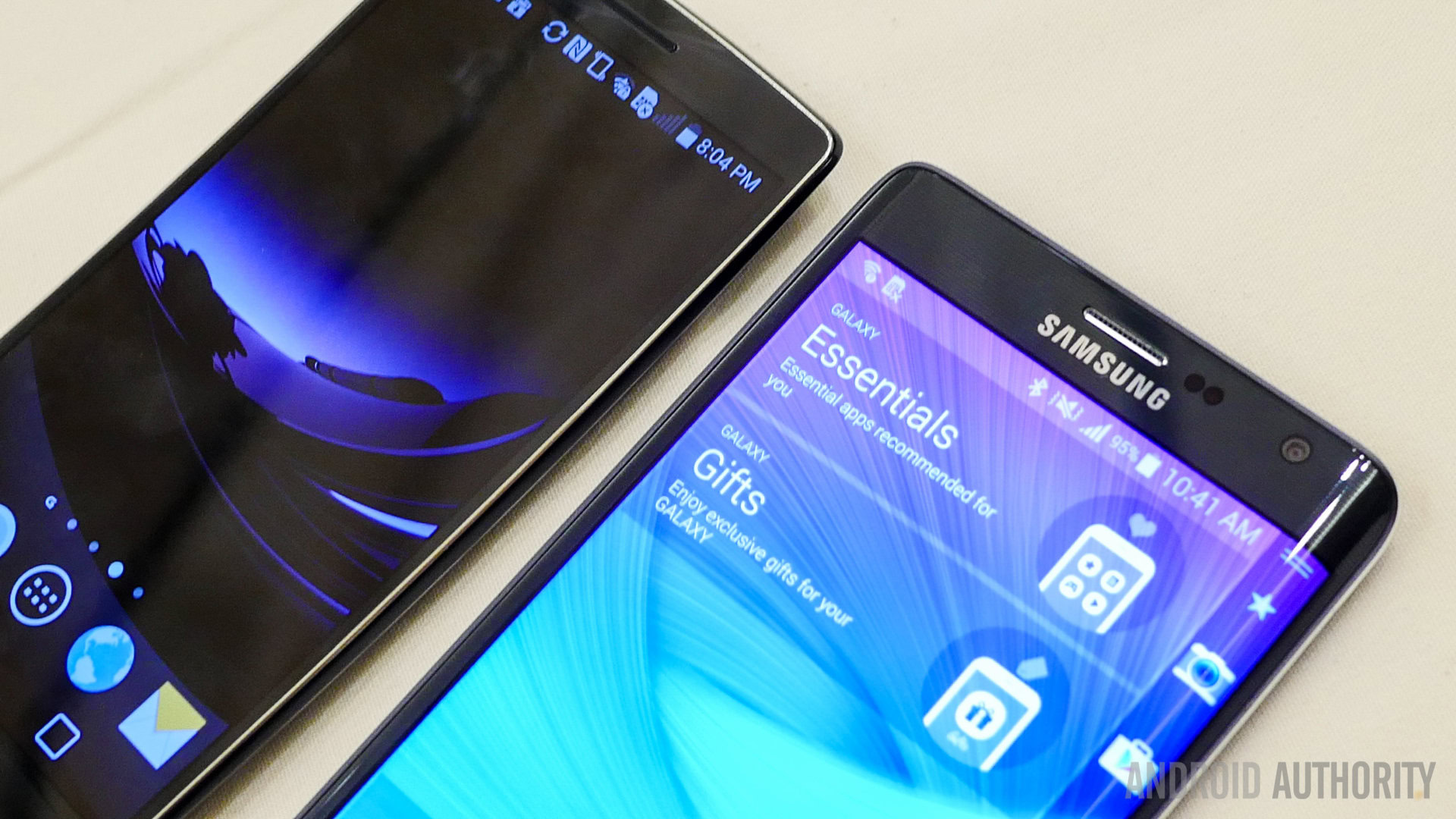
LG is hitting the ground running at CES 2015, by taking the wraps off of the follow up to its unique curved smartphone, the LG G Flex 2! With the device now boasting specifications and features that can compete at the flagship level, we are curious to see how the it stacks up against another flagship smartphone with a unique design element. Here’s a quick look at the LG G Flex 2 vs Samsung Galaxy Note Edge.
Design
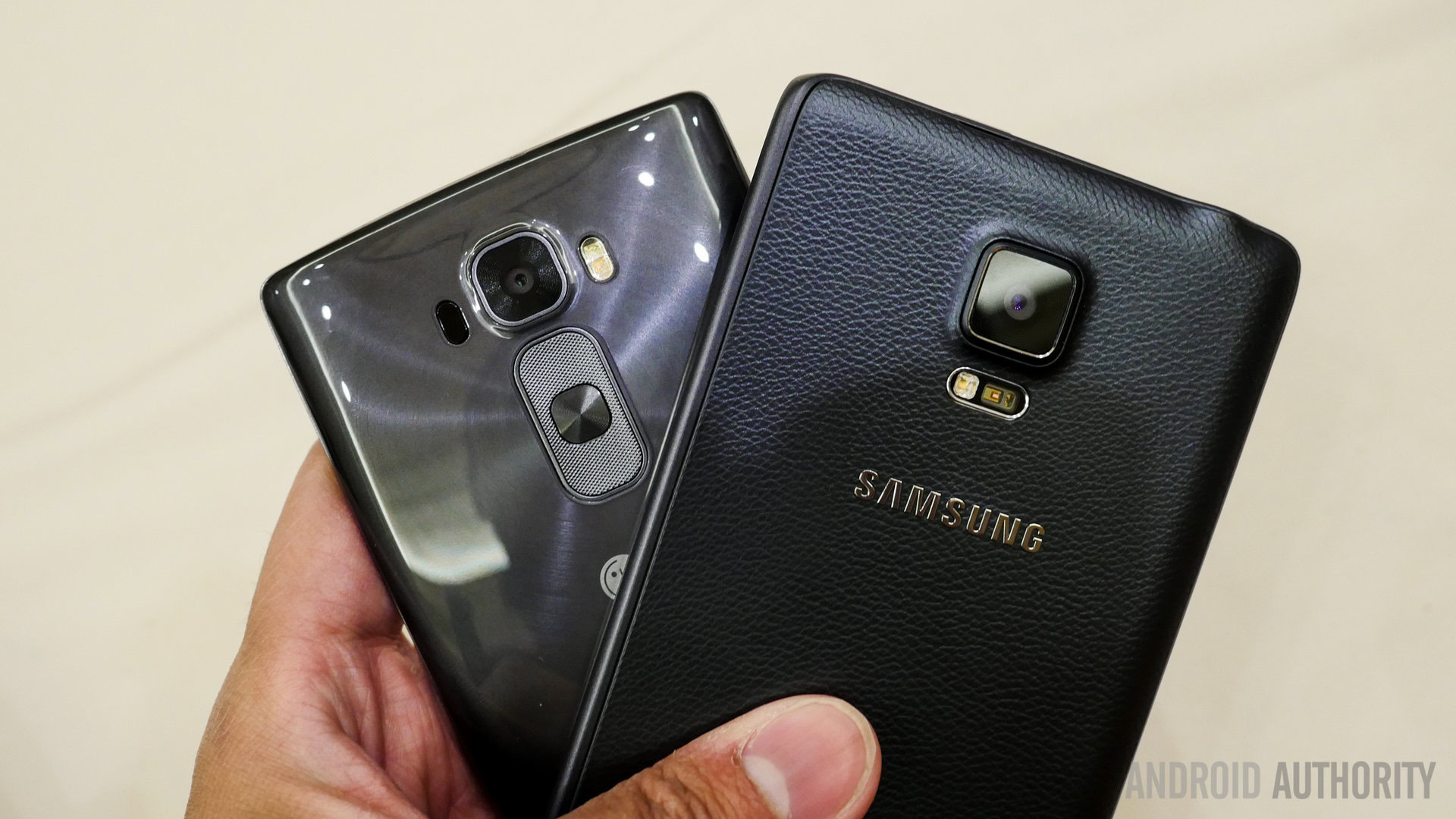
Thanks to their curves, the LG G Flex 2 and the Samsung Galaxy Note Edge are two of the most unique smartphones out there. That said, they are far from similar, with the curve taking on a very different meaning in either case.
The G Flex 2 features a dramatic curve from top to bottom, that not only looks unique but is supposed to make it more ergonomic to use. As is the case with all recent LG flagships, the front is all screen, surrounded by ultra-thin bezels on the sides, with the power button and volume rocker found on the back. LG also used an in-house DuraGuard glass panel to protect the display, which uses a chemical gas process for enhanced durability, and special coatings to increase resistance and reduce reflection.
On the back is an improved version of the self-healing material that was first introduced with the original G Flex. With this iteration, minor scuffs and scratches will begin disappearing in less than 15 seconds, which is definitely a significant boost from the few minutes it would take earlier.
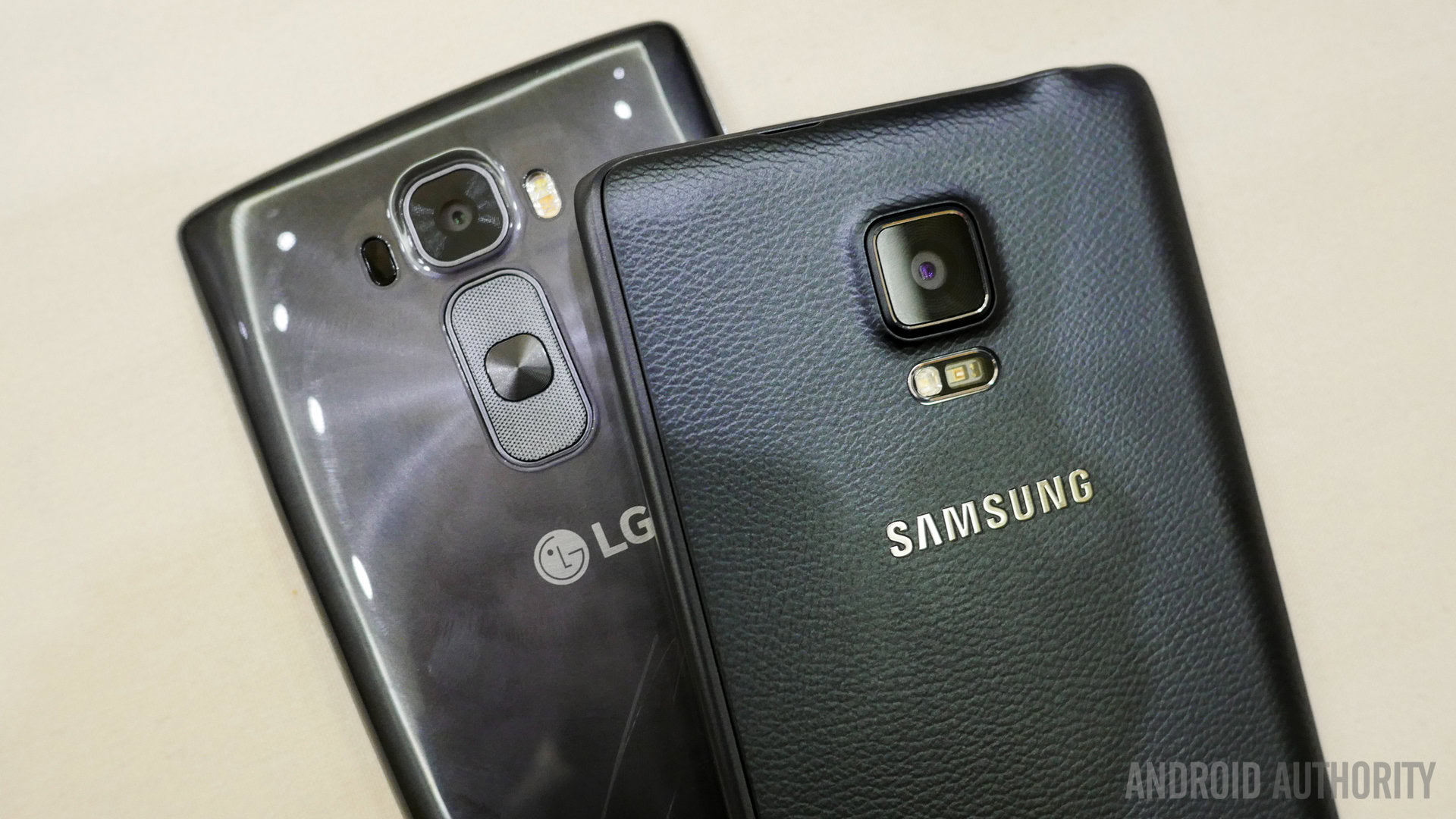
In the other hand is the Samsung Galaxy Note Edge, that takes the new metal frame design language and features of the Galaxy Note 4, including the inclusion of an S-Pen stylus, and adding an extension to the display that curves over the right edge of the device. Trademark Samsung elements are all available here though, including a tactile home button up front, and a removable plastic back cover, that gives you access to the replaceable battery. In the case of the Note Edge, the display is protected by the latest Gorilla Glass 4.
The two smartphones are quite similar in size, with the G Flex 2 slightly narrower and lighter than the Note Edge. That said, while the curve of the G Flex 2 adds to the overall handling experience, in the case of the Galaxy Note Edge, the special, but unbalanced aspect of the design does take some getting used, even if the plastic back does allow for a good grip.
Display
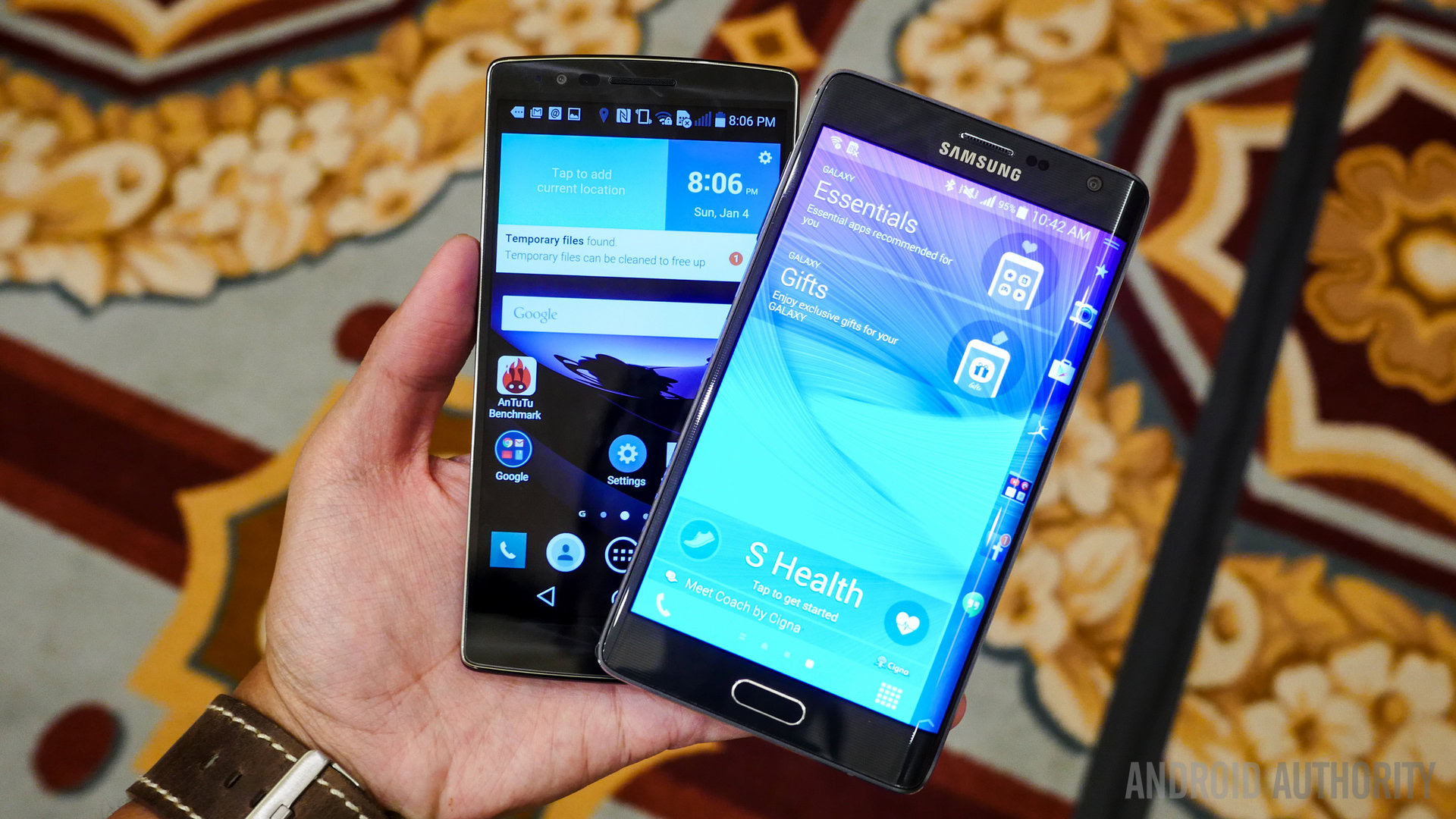
Both devices make use of plastic-based OLED technology, which ensures great contrast, deep blacks, and vivid colors. The Galaxy Note Edge does come ahead in a specs war courtesy of its higher Quad HD resolution, but the G Flex 2, with its 1080p resolution, is certainly no slouch, and you’ll be hard pressed to notice a significant difference.
The bigger story of course is the effect of the curvature. Even with the added Edge, the Samsung device is still pretty conventional to use, with the extra panel just housing some additional information and app specific functionality, while on the G Flex 2, the effect is more dramatic, with the overall viewing experience affected. At the end of the day, you’ll have a great time on both displays, once you get used to the curves.
Performance and Hardware
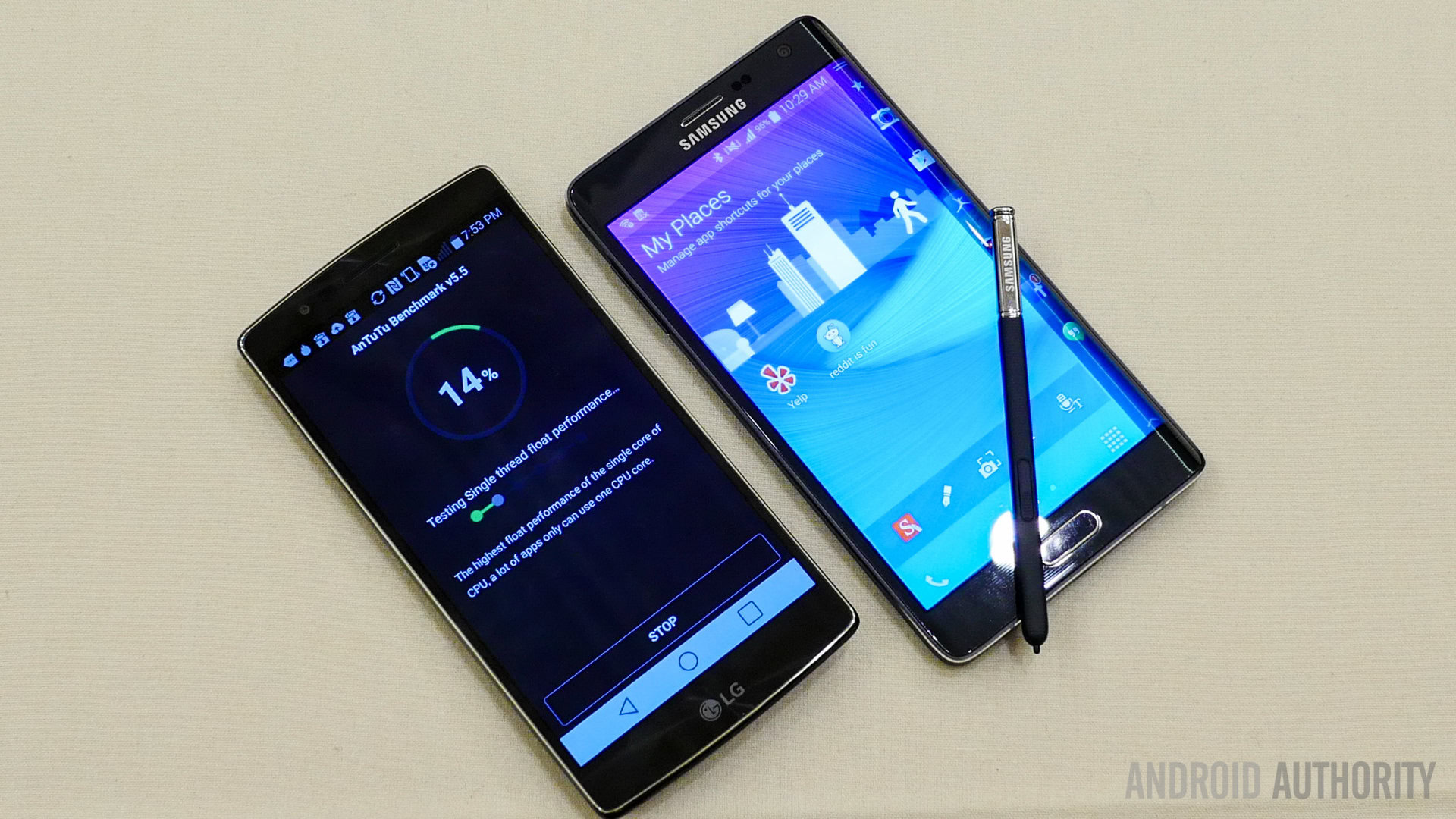
Things are quite close in terms of performance, though the G Flex 2 is nominally more powerful thanks to the use of the new 64-bit octa-core Qualcomm Snapdragon 810 processor. This octa-core chip performs exceedingly well in benchmarks, and real world performance is expectedly fantastic, especially with the aid of 64-bit Android 5.0 Lollipop.
The Note Edge is of course no less of a beast, with its Qualcomm Snapdragon 805 processor and 3GB of RAM. Performance is as smooth as ever, but as is the case with all Samsung devices, the heavy TouchWiz UI can cause hitches now and then. Both devices come with a full suite of connectivity options, but the Galaxy Note Edge takes the lead in terms of hardware with the inclusion of the S-Pen stylus all that it entails. Both devices include the option of expandable storage, with the G Flex 2 boasting a storage expansion possibility of a whopping 2 TB.
On the battery front, the Galaxy Note Edge comes with a removable unit, which could attract power users, while the curved battery of the G Flex is built-in. Both phones feature fast charging, meaning that charging them for 30-40 minutes is enough for many hours of use.
Cameras
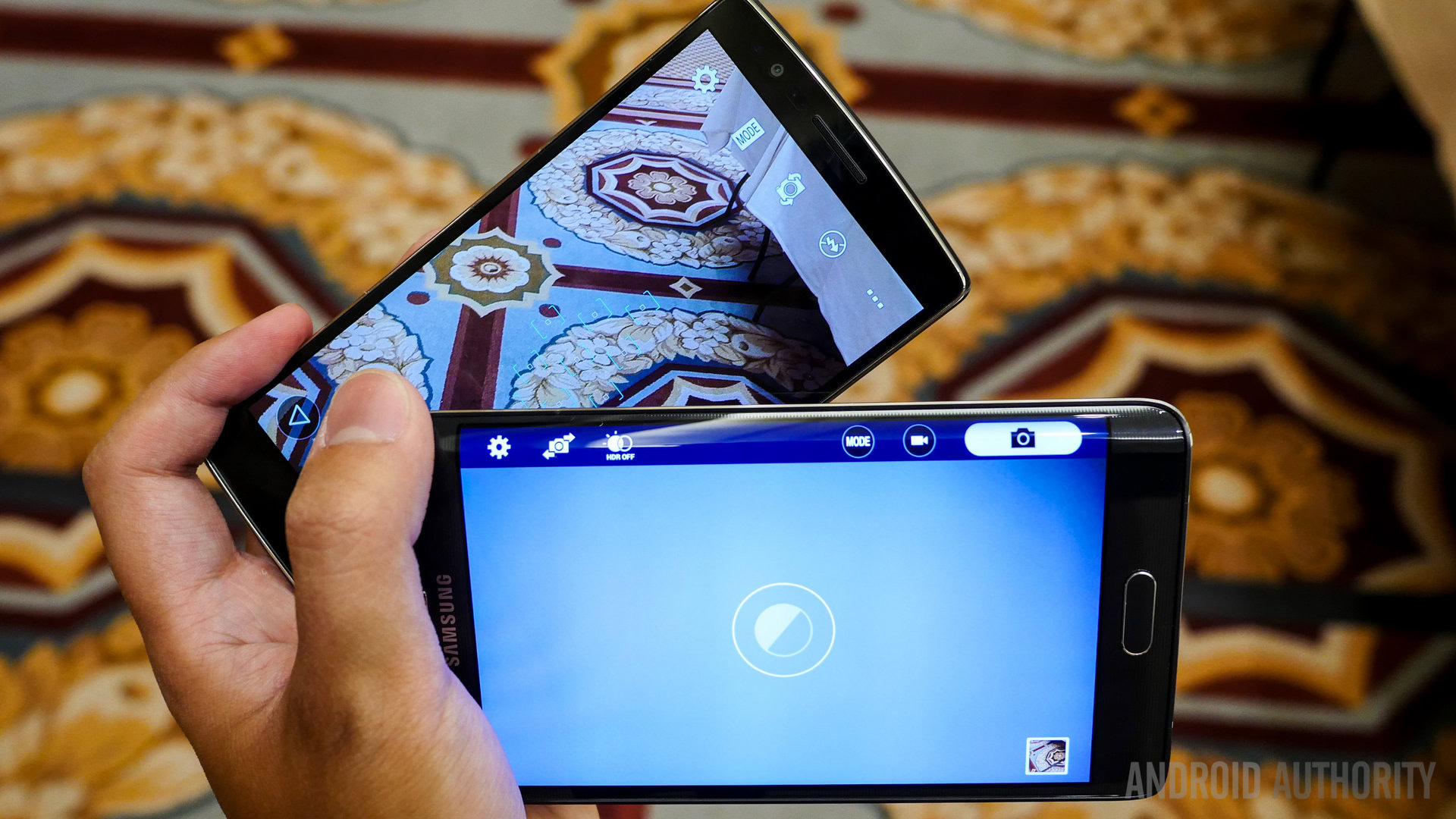
LG says the camera on the G Flex 2 is its best camera yet, improving on the already very good camera of the LG G3. Like the flagship device, the G Flex 2 features OIS+ and a laser assisted focus, which ensure faster focus times even in low light conditions. The devices with a 13 MP rear camera with a dual LED flash, along with a 2.1 MP front-facing unit.
Like the Galaxy Note 4, the Galaxy Note Edge features a 16 MP rear camera with OIS, while the front camera is a 3.7 MP unit with a wide-angle lens. Samsung’s camera prowess is well known, and that continues with the Note Edge, making it one of the best smartphone cameras around.
Both Samsung and LG tried to bake useful features into their camera apps, with features like gesture-triggered selfies or panoramic selfies, a slew of modes, and a lot more to play around with. These cameras are among the very best Android has to offer, and you should get a great experience with either one.
Software
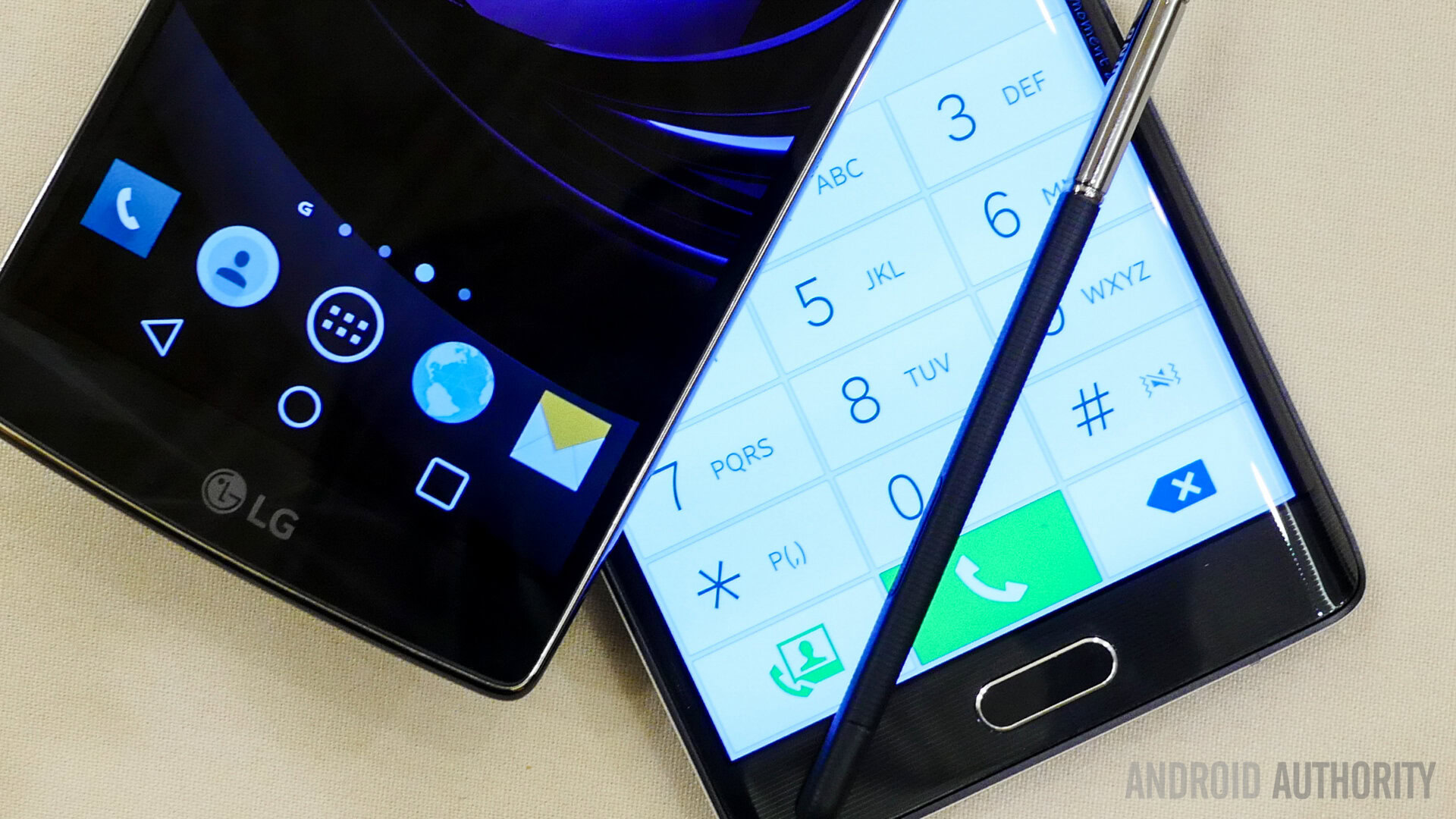
The LG G Flex 2 will launch with Android 5.0 Lollipop out of the box, but the software experience remains largely similar to the LG G3, with the same features of the G UI, like Knock On, Smart Notice, and Smart Keyboard, making its way to the G Flex 2. A lot of the material design elements aren’t to be found on LG’s customized software version, but you do get lockscreen notifications, a revamped notification pull down, and the new Recent Apps screen, among many other smaller changes.
The Galaxy Note Edge is TouchWiz through and through, bringing with it all that you may love and hate about this UI. As always, there is a ton of features, even if Samsung scaled it down a bit. The real differentiating factor is, of course, the S-Pen, and the multitasking features. From writing done a memo, to “clipping” pages for research, to doing more advanced editing and selecting, the S-Pen is what makes the Note Edge special. The multi-tasking component has been augmented, with the ability to quickly switch from window-mode to full screen, or to have multiple apps open on the screen at the same time. The Galaxy Note Edge runs Android 4.4 KitKat at the moment, though rumors point to a Lollipop update coming as soon as this month.
Specs Comparison
| Samsung Galaxy Note Edge | LG G Flex 2 | |
|---|---|---|
Display | Samsung Galaxy Note Edge 5.6-inch Quad HD Super AMOLED display 524 ppi | LG G Flex 2 5.5-inch Full HD Curved P-OLED 403 ppi |
Processor | Samsung Galaxy Note Edge 2.7 GHz quad-core Qualcomm Snapdragon 805 Adreno 420 GPU | LG G Flex 2 2 GHz 64-bit octa-core Qualcomm Snapdragon 810 processor Adreno 430 GPU |
RAM | Samsung Galaxy Note Edge 3 GB | LG G Flex 2 2 GB |
Storage | Samsung Galaxy Note Edge 32/64 GB, expandable up to 128 GB | LG G Flex 2 16/32 GB, expandable up to 2 TB |
Network | Samsung Galaxy Note Edge 4G / LTE / HSPA+ 21/42 Mbps | LG G Flex 2 4G / LTE / HSPA+ 21/42 Mbps |
Connectivity | Samsung Galaxy Note Edge Wi-Fi 802.11 a/b/g/n/ac, Bluetooth 4.1, NFC, A-GPS / Glonass, USB 2.0 | LG G Flex 2 Wi-Fi 802.11 a/b/g/n/ac, Bluetooth Smart Ready (Apt-X) 4.1, NFC SlimPort, A-GPS / Glonass, USB 2.0 |
Camera | Samsung Galaxy Note Edge Rear 16 MP with OIS. Front 3.7 MP wide angle lens | LG G Flex 2 Rear 13.0MP with OIS+ with Laser Auto Focus Front 2.1MP |
Battery | Samsung Galaxy Note Edge 3,000 mAh | LG G Flex 2 3,000 mAh |
Dimensions | Samsung Galaxy Note Edge 151.3 x 82.4 x 8.3 mm 174 grams | LG G Flex 2 149.1 x 75.3 x 7.1-9.4mm 152 grams |
Gallery
Conclusion at a Glance
So there you have it – a quick look at the LG G Flex 2 vs Samsung Galaxy Note Edge! Both LG and Samsung have attempted something out of the box with their respective smartphones, and while some may consider the curve and the edge gimmicky, both devices offer a lot more beyond these unique design aspects. With top of the line specifications, a host of software and hardware features, and arguably some of the best smartphone cameras out there, you get a lot more than just the curve with either smartphone.